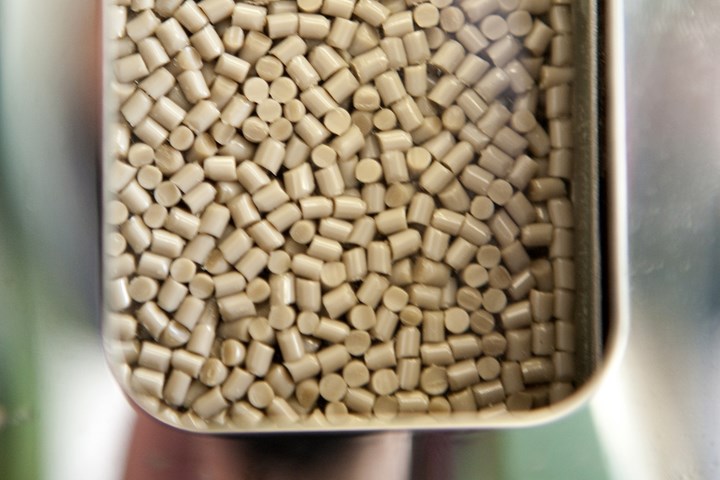High-Viscosity PEEK for Injection Molding and Extrusion
Evonik’s new Vestakeep 4500 PEEK boasts a higher crystallization rate and better flowability than the well-established Vestakeep L4000 G grade.
A high-viscosity PEEK material for injection molding and extrusion is the latest addition to the extensive range of high-performance Vestakeep PEEK products from Evonik, Parsippany, N.J. Vestakeep 4500 G reportedly exhibits high melt stiffness, which simplifies processing during extrusion. Its rapid crystallization shortens the cycle time in injection molding, and the components are easy to eject and exhibit good dimensional stability.

Evonik’s PEEK products range from low-viscosity to high-viscosity molding compounds, granules as well as powders, unreinforced as well as equipped with glass fibers and carbon fibers. Thanks to their high temperature and chemical resistance, and their high ductility, these specialty polymers can replace metal components to enable, for example, sophisticated lightweight construction applications.
The newly developed 4500 G grade complements the high-viscosity variants with a product that has a higher crystallization rate and better flowability than Vestakeep L4000 G, which is well known on the market. During processing, 4500 G also shows higher melt stiffness and better temperature resistance. Its inherent color is slightly lighter than the well-known molding compound. The combination of its properties makes 4500 G suitable for many applications.
Related Content
-
Commodity Resin Prices Flat to Lower
Major price correction looms for PP, and lower prices are projected for PE, PS, PVC and PET.
-
Polymer Showdown — PC/ABS vs. PC/PBT — May the Best Material Win
First in a series, experts from plastics engineering consultancy The Madison Group will pit leading thermoplastics against each other to see how they differ in processing characteristics, chemical resistance, thermal and mechanical performance, and more.
-
Let's Take a Journey into the World of Molding Thermosets – Part 1
There are many fundamental differences between thermosets and thermoplastics, from the way raw materials are furnished to the molder and the process in which parts are molded.


